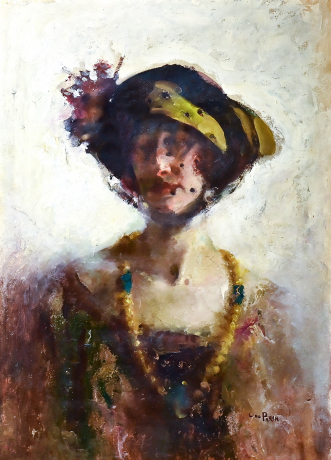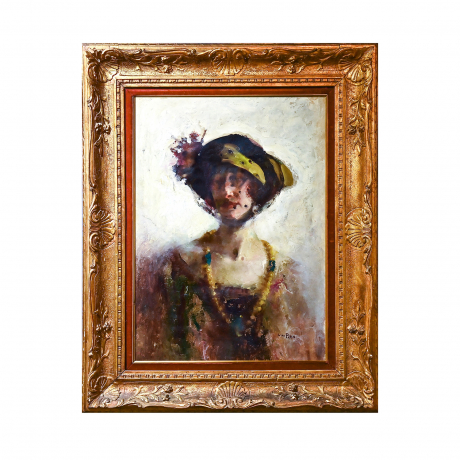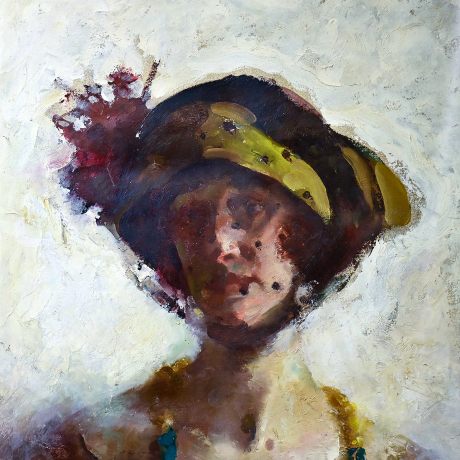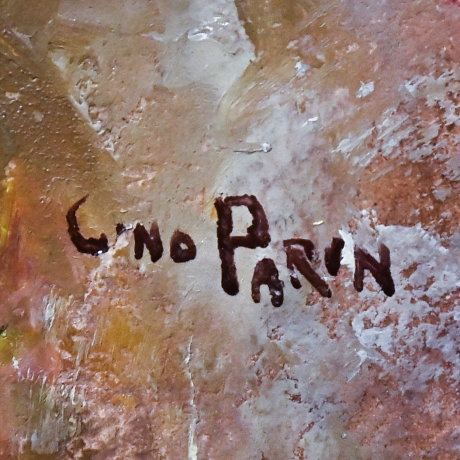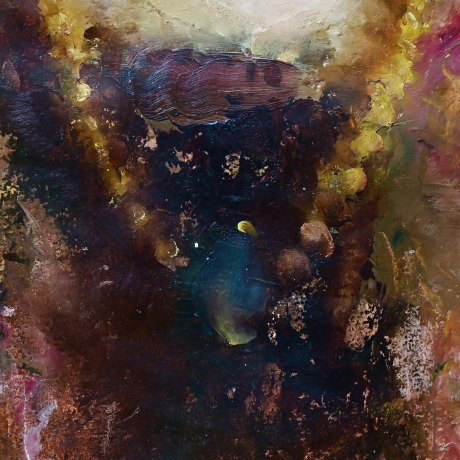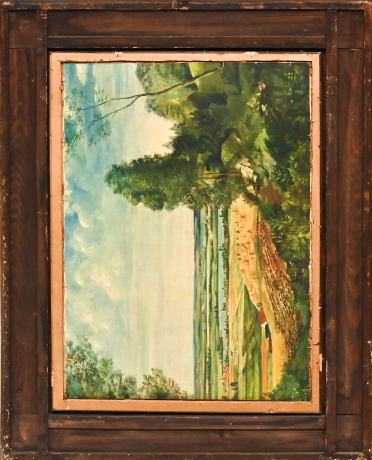| Epoca: | Anni '20/'30 | Misure: | In cornice H 102 x L 82 x P 7,5 / Tela H 79 x L 59 cm | |
| Per info: | Contattare | Prezzo: | VENDUTO | |
"Donna con veletta" olio su carta di Gino Parin. Il dipinto è degli anni '20/'30 del Novecento, ha una bella cornice in legno dorato coeva. Il quadro e la cornice necessitano di pulitura. Proviene da una collezione privata biellese.
Gino Parin nacque a Trieste nel 1876. Il suo vero nome era Federico Gino Pollack. Avviò l’educazione artistica nello studio del pittore triestino Eugenio Scomparini per poi proseguire in quello del veneziano Girolamo Navarra. A 19 anni si recò a Monaco per frequentare l’Accademia dove seguì i corsi di Karl Raupp e conobbe la pittura dei Preraffaeliti, di Lenbach, von Marées e von Stuck. Divenuto membro del Münchener Künstler Genossenschaft, espose spesso al Glaspalast. Viaggiò molto in Europa, visitando la Svizzera, la Francia e l’Inghilterra. Dal 1910 cominciò a partecipare alle collettive del Circolo Artistico di Trieste. Qui si stabilì definitivamente allo scoppio della prima guerra mondiale. Partecipò alle Biennali del 1921, 1924, 1928 e 1932. Nel 1923 ricevette la medaglia d’oro alla Quadriennale di Torino. In questo periodo il suo stile, dall’originaria impostazione accademica tedesca, evolse verso una personale rielaborazione del gusto degli anni Déco. La produzione, incentrata soprattutto su ritratti femminili e pittura d’interni, gli valse la definizione di “pittore delle belle donne”.
Deportato dai tedeschi nel 1944, morì nel campo di Bergen Belsen.
"Woman with veil" oil on paper by Gino Parin. The painting is from the 20s / 30s of the twentieth century, has a beautiful coeval gilded wood frame. The picture and the frame need cleaning. It comes from a Biella private collection.
Gino Parin was born in Trieste in 1876. His real name was Federico Gino Pollack. He began his artistic education in the studio of the Trieste painter Eugenio Scomparini and then continued in that of the Venetian Girolamo Navarra. At 19 he went to Munich to attend the Academy where he attended the courses of Karl Raupp and became acquainted with the painting of the Pre-Raphaelites, Lenbach, von Marées and von Stuck. Having become a member of the Münchener Künstler Genossenschaft, he often exhibited at the Glaspalast. He traveled extensively in Europe, visiting Switzerland, France and England. From 1910 he began to participate in the collective exhibitions of the Trieste Artistic Circle. Here he settled permanently at the outbreak of the First World War. He participated in the Biennials of 1921, 1924, 1928 and 1932. In 1923 he received the gold medal at the Turin Quadrennial. During this period his style, from the original German academic setting, evolved towards a personal reworking of the taste of the Deco years. His production, mainly focused on female portraits and interior painting, earned him the definition of "painter of beautiful women".
Deported by the Germans in 1944, he died in the Bergen Belsen camp.
Categorie:

